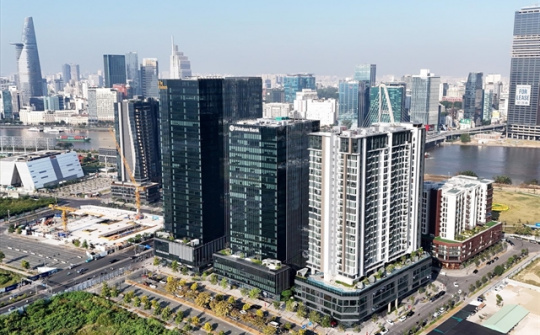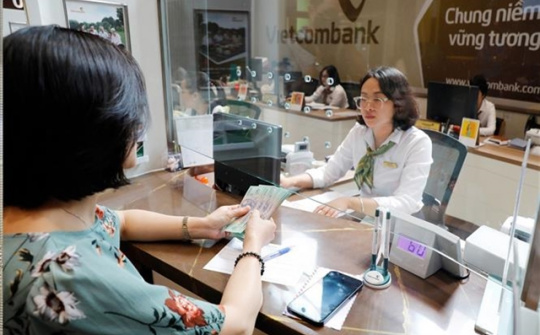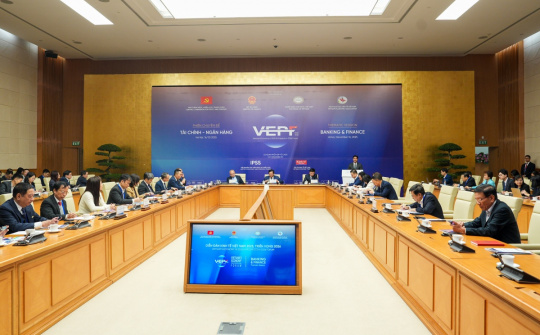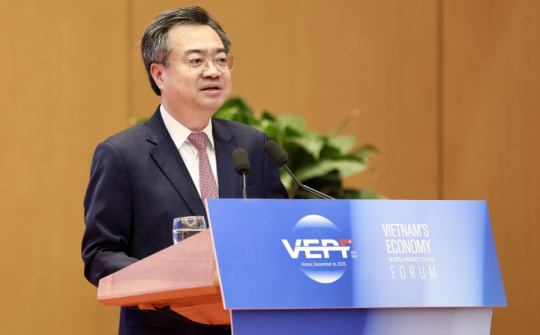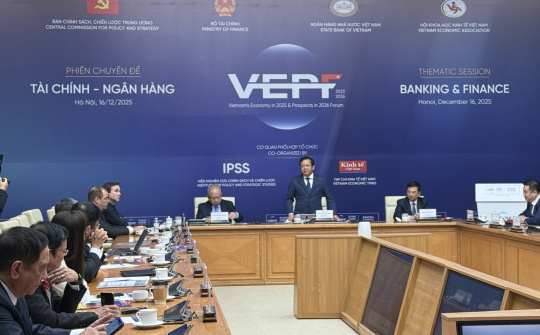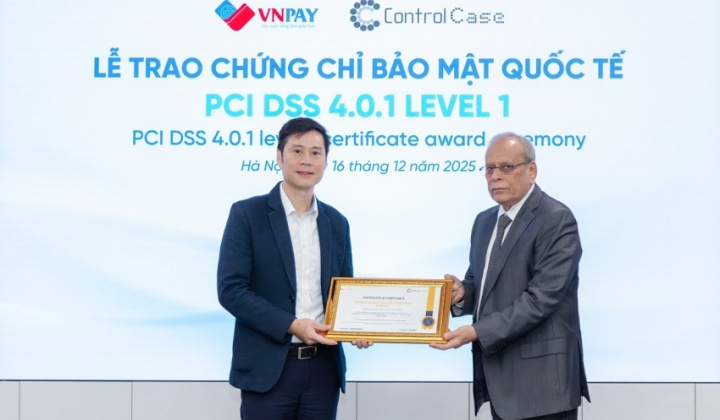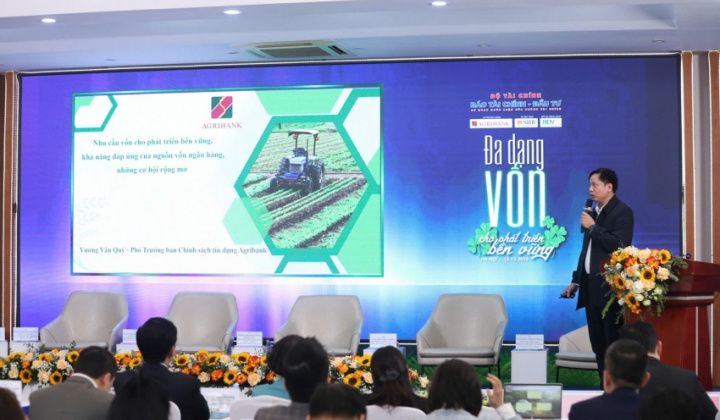The participants in the Workshop focused on exchanging, discussing and evaluating the following topics: (i) Relevant policies for green growth, resource demands to implement the national green growth strategy; the National green taxonomy as presented by representatives of the Ministry of Finance and the Ministry of Agriculture and Environment; (ii) Assessment of the implementation status of the Banking Sector's Action Plan to implement the National Strategy on Green Growth and the COP26 Scheme by the SBV and several commercial banks (in line with Decision No. 1408/QD-NHNN dated July 26, 2023); (iii) International experience as presented by experts from Germany in implementing and developing green finance; (iv) Orientations for green growth policies in the banking sector in the coming time.
According to the assessment of a representative from the Ministry of Finance, the demand for finance to implement Vietnam's green growth and Net Zero goals by 2050 is very big, estimated from 670 to 700 billion USD for the total long-term investment, accounting for 6.8% of the annual GDP, of which nearly 368 billion USD is for climate change adaptation goals.
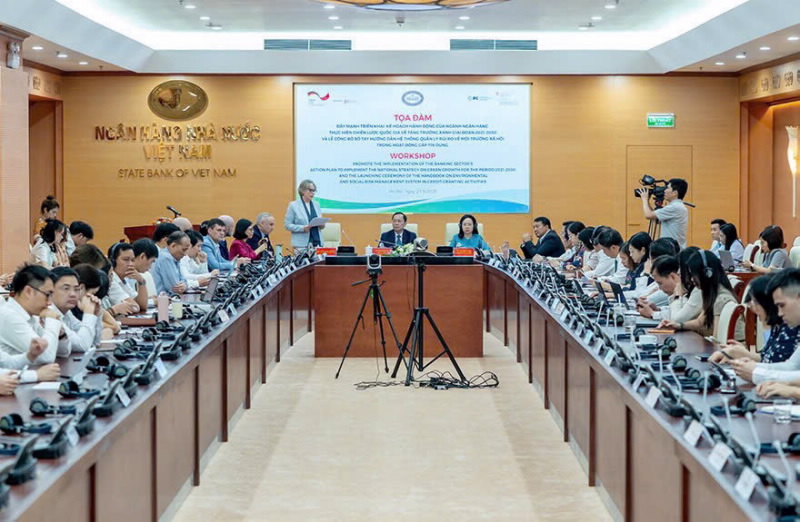
An overview of the Workshop
On the side of the banking sector, to effectively implement the assigned tasks set out in the National Strategy on Green Growth and the National Action Plan on Green Growth for the 2023–2030 period, the SBV Governor has issued Decision No. 1408/QD-NHNN with 07 groups of tasks and solutions for the banking system. After more than 1 year’s implementation by the entire banking sector, a lot of positive results have been achieved, including:
On the SBV’s side:
- The review and improvement of the legal frameworks on credit in general, green credit and environmental and social risk management in particular have been implemented strongly by the SBV, creating a foundation to improve the operational capacity of the credit institutions.
- The SBV has proactively exchanged with the international financial institutions, such as the World Bank (WB), the Asian Development Bank (ADB), the Asian Infrastructure Development Bank (AIIB),... to mobilize resources (technical and financial assistance) for green growth and sustainable development,….
- Non-cash payments and the digital transformation in the banking sector have been continuously improved and developed in terms of both policy frameworks and the implementation by the system of credit institutions.
- The training and development of human resources in the banking sector to implement the National Strategy on Green Growth has been focused and implemented in a variety of formats.
- The SBV has also promoted the communication activities on the banking sector's policies on green credit and green banking through the web portals, newspapers, seminars and financial education programs, etc.
- The SBV has requested the entities in the banking sector to promote green procurement, prioritize the use of environmentally friendly products and services in the public procurement activities.
On the credit institutions’ side:
The credit institutions have actively implemented the tasks and solutions to achieve the green credit goals, closely following the directions of the SBV, including: (i) Proactively developing green growth objectives which are integrated in their business strategies and business development plans; (ii) Diversifying their resources (green deposit products, issuing green bonds,...) for green growth in addition to the traditional mobilization channels; (iii) Researching and developing green credit products, modern products and services, and new means of payment; etc.
Speaking at the Workshop, representatives of a number of credit institutions, including the BIDV, Agribank, HSBC,… shared their experience and good practices in implementing the solutions and policies on green credit, environmental and social risk management, and sustainable finance.
Representatives from some German commercial banks, including the KfW, the DEG, DZ BANK, shared their experience in applying the international environmental and social standards (the EU Taxonomy, the Equator Principles, the IFC’s Performance Standards, etc.) in building their operational orientations and lending activities, and developing sustainable financial products and services.
In the coming time, the SBV would closely follow the socio-economic development goals, the National Strategy on Green Growth and the assigned tasks in the Schemes, Strategies and Action Plans on Green Growth, Climate Change Response, and the Prime Minister's directions on promoting the implementation of the National Strategy on Green Growth to continue implementing the solutions and policies to promote the activities of the banking sector towards the goals of green growth and climate change response, focusing specifically on:
Firstly, continuing to manage the credit growth in an appropriate manner, directing credit to production and business sectors, the priority sectors, and the economic growth drivers in accordance with the Government's policies.
Secondly, continuing to review and improve the legal frameworks on green credit, including proposing amendments and supplementations to preferential credit programs and policies to encourage the development of high-tech agriculture, organic agriculture, and circular agriculture; requesting the credit institutions to focus their capital resources for and facilitate the implementation by businesses, especially private companies in green and environmentally friendly projects, as well as circular economy models.
Thirdly, studying the interest rate support mechanisms and propose possible innovations in the State's interest rate support methods for the private sector to obtain loans to implement green projects, apply the ESG standards,…
Fourthly, monitoring the implementation of the environmental risk management in the credit granting activities by the credit institutions, promptly supporting them and removing any difficulties in the implementation process.
Fifthly, actively connecting with domestic and foreign institutions to receive financial and technical support to implement activities on green finance, green banking,…
Sixthly, promoting the training and capacity development on green growth and green economic development for the banking sector
Seventhly, promoting communication activities on the implementation results of the National Green Growth Strategy in the banking sector, and raising awareness among customers about green growth, sustainable production, and consumption.
Based on the results of the Workshop, the SBV has developed a Summary Report as a reference document for credit institutions to promote the implementation of tasks in the banking sector aimed at implementing the National Green Growth Strategy in the coming period.
In addition, the SBV also launched the Handbook on Environmental and Social Risk Management System for credit institutions and foreign bank branches (in both Vietnamese and English versions).
Source: SBV


